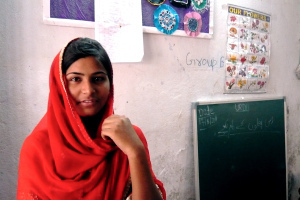Sarah Garland's Blog, page 2
December 21, 2011
Two of nation’s largest Head Start providers must fight for federal funds
New York City’s Administration for Children’s Services (ACS) is at risk of losing a $190 million grant, after the federal government included it on a list of 132 substandard Head Start agencies across the country this week.
Head Start is the half-century-old federal preschool program for low-income children. ACS, among the oldest and largest Head Start agencies in the country, did not meet the “quality thresholds” set by the federal Office of Head Start, according to a list made public Tuesday by the Administration for Children & Families, which oversees the program.
ACS is not the only large Head Start agency, known as a super-grantee, whose funding is threatened. The Los Angeles County Office of Education, which bills itself as the largest Head Start agency in the nation, was also included on the list, along with nonprofits and school districts in 38 states. Virginia has the greatest number of agencies that must reapply for their federal contracts, with 11; Ohio has 10, and New York isn’t far behind, with nine.
Read the rest of the story at The Hechinger Report. A version was also printed by Gotham Schools.


December 16, 2011
Early Education Advocates Are Winners with New Race to the Top
The announcement of nine winners in the Obama administration’s latest version of its “Race to the Top” education competition will push forward reforms that early learning advocates have lobbied heavily for over the past several years.
 Children read at a preschool in Carpinteria, Calif. (Photo by Sarah Garland)
Children read at a preschool in Carpinteria, Calif. (Photo by Sarah Garland)The winners are California, Delaware, Maryland, Massachusetts, Minnesota, North Carolina, Ohio, Rhode Island and Washington state. To win, they promised to increase accountability, raise the quality of preschool teachers and improve coordination between the various private and public agencies that provide early education.
For the rest of the story on The Hechinger Report, click here.


October 25, 2011
Three-part series on the Hispanic achievement gap: Why it’s not getting better, and why we should worry.
 The Hechinger Report, in partnership with California Watch, has published a three-part series on the Hispanic achievement gap in California this week. We focus on reading by third grade, a benchmark that can predict how students will do later in school.
The Hechinger Report, in partnership with California Watch, has published a three-part series on the Hispanic achievement gap in California this week. We focus on reading by third grade, a benchmark that can predict how students will do later in school.
Only 12 percent of Hispanic fourth-graders in California–which has the largest number of Hispanic students in the country–were proficient in reading on the National Assessment of Educational Progress in 2009, which places them behind every state in the nation except for Utah and Minnesota. On this test, the proficiency gap between Hispanic and white students actually grew slightly over the past decade.
The series looks at what’s being done and what isn’t in the small town of Soledad, a microcosm for the problems the state is facing, how English learners in particular have fared and what we know about the best ways of teaching them, and how early education might help.
Today at 5pm Eastern/2pm Pacific, we’ll be having a discussion about the series on Twitter. Follow and join in with #learninggap.


October 20, 2011
Young women still lag behind in India
 Literacy levels and educational attainment for women in India have improved in recent years, but India continues to rank low on international education and empowerment measures for women. On the World Economic Forum’s global gender gap index, India ranked 112 out of 134 countries in 2010. The gap between the percentage of girls and boys who reach high school is shrinking, but it’s still wide. About 40 percent of girls did so in 2006 according to an analysis by the World Bank, compared to about half of boys. Read the rest of the story and see the photo slideshow on The Hechinger Report.
Literacy levels and educational attainment for women in India have improved in recent years, but India continues to rank low on international education and empowerment measures for women. On the World Economic Forum’s global gender gap index, India ranked 112 out of 134 countries in 2010. The gap between the percentage of girls and boys who reach high school is shrinking, but it’s still wide. About 40 percent of girls did so in 2006 according to an analysis by the World Bank, compared to about half of boys. Read the rest of the story and see the photo slideshow on The Hechinger Report.


September 15, 2011
Minority students get a chance at college in rural Vermont; Will they succeed?
Under a Southern Vermont College program, called Pipelines Into Partnerships, the college’s admissions office has outsourced much of the responsibility for choosing 17 members of its incoming freshman class to KIPP, the largest charter chain in the country, as well as to a high school in Brooklyn and the Boys and Girls Club of Schenectady, N.Y.
college’s admissions office has outsourced much of the responsibility for choosing 17 members of its incoming freshman class to KIPP, the largest charter chain in the country, as well as to a high school in Brooklyn and the Boys and Girls Club of Schenectady, N.Y.
It’s a rare setup. Although colleges often have close relationships with high schools, very few cede control over admissions decisions. The partners believe their model — which focuses on unconventional measures of success, such as grit and academic improvement instead of just overall grades and scores — will give a chance at college to minority students who might otherwise be overlooked. Read the rest of the story in USA Today.
Or see a longer version here at Hechinger, along with a sidebar about the importance of fitting into college.


Sarah Garland's Blog
- Sarah Garland's profile
- 2 followers



